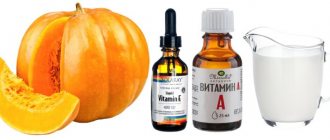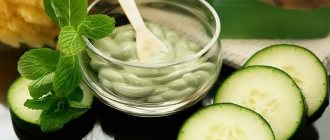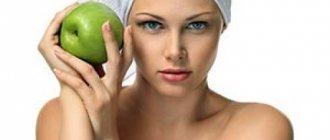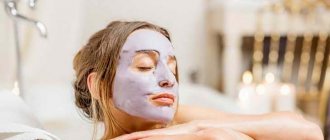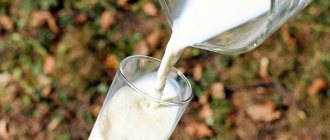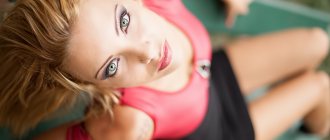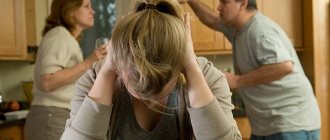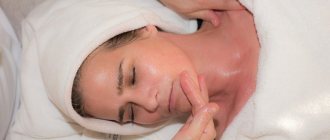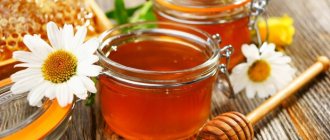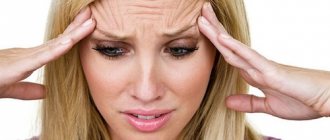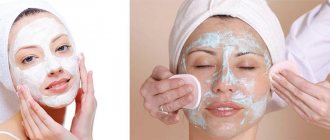Vitamins for complexion in yeast
Yeast is especially rich in beauty vitamins (PP, C, group B), which are responsible for a beautiful complexion and velvety skin.
Yeast contains important nutrients for the body - proteins, which include all the essential amino acids, carbohydrates, a large set of minerals, and enzymes. That's why experts recommend this amazing “live” product:
- with vitamin deficiencies;
- to improve immunity;
- to normalize metabolism;
- under high physical activity;
- during times of stress.
Yeast in cosmetics
Yeast, which is used in cosmetics in the form of yeast extract, serves as a powerful energy source that promotes the renewal of skin cells and improves the metabolism of the dermis and epidermis.
Synonyms: Faex (Yeast) Extract, Faex Extract, Yeast Extract, Saccharomyces Cerevisiae Extract. Patented Formulas: Yeast Complex B Discontinued, Yeast Extract SC-B, 1.5% YEAST EXTRACT WITH PRESERVATIVES, AC DermaPeptide Toning, Naviture® Liposomal Yeast Extract 1%, ßetavera™, Drieline™, MITOKINYL®.
Yeast extract energizes skin 9031
Effect of yeast in cosmetics
Today, yeast is not an outdated dietary supplement, but a complete active cosmetic component of absolutely natural origin, which will help you forget about the problems of aging and oily skin. First of all, yeast extract acts as a powerful antioxidant and activator of metabolic processes in cells and tissues, which stimulates oxygenation (oxygen consumption) and ATP synthesis due to increased oxygen absorption in cells by mitochondria. In this role, yeast extract acts mainly as a rejuvenating component, which allows skin cells to renew themselves faster and more efficiently. In addition, yeast effectively counteracts the influence of negative environmental factors that pollute the skin, protects it from pollution and stress, tones it, and also helps fight photodamage (when used in combination). Indirectly, yeast extract also promotes proper nutrition and hydration of the skin, improves its microrelief.
Another role of yeast in cosmetics - sebum regulating - has brought this component popularity both as a cosmetic ingredient and as a substance for dietary supplements. Yeast extract, especially when combined with vitamin-soothing ingredients such as thiamine and pyridoxine, reduces sebum production through multiple interactions and synergistic effects. Thus, the yeast additionally helps to restore the natural radiance of the skin, removing excess shine due to the balance of the sebaceous glands.
The combination of yeast with ultraviolet filters gives very good results - such complexes act as a protective agent, reparatives, sunscreens with an additional anti-age effect. In addition, yeast can be perfectly combined with various other active cosmetic ingredients. For example, when combined with sorbitol, yeast extract strengthens the skin's natural defense mechanisms, reduces redness and inflammation, speeds up the repair of skin damage, and even helps reduce the appearance of stretch marks and protect against photodamage.
In some cases, it is not the extract that is used in cosmetics, but smaller molecules, polysaccharides, extracted from Saccharomyces cerevisiae. The use of these polysaccharides allows you to achieve a more pronounced anti-aging effect: these molecules activate glycosaminoglycans in the thickness of the epidermis, thus helping to collect and retain moisture closer to the surface layer of the dermis. As a result, the skin becomes more elastic, and wrinkles, as if “pushed out” from the inside, are smoothed out. Also, some derivatives of Saccharomyces cerevisiae extract can improve local microcirculation and reduce the appearance of dark circles under the eyes.
Who is yeast indicated for?
This component is designed to solve a number of cosmetic problems with both skin and hair.
- For regeneration and revitalization of the skin.
- With comprehensive anti-aging care.
- To restore skin after environmental stress.
- Anti-wrinkle agent.
- For the care of excessively oily or problematic skin.
- For complex acne treatment.
- For skin relaxation.
- To combat poor sallow complexion
- For application to the scalp when there is excessive sebum secretion, i.e. for the problem of oily hair.
- For oily seborrhea.
- As a healing agent.
Who is yeast contraindicated for?
It is considered to be a 99% safe ingredient, and the only concern among experts is its increased absorption into the skin. No other studies have found yeast extract to exhibit negative side effects associated with its use in cosmetics. A strict contraindication is an individual hypersensitivity reaction.
Cosmetics containing yeast
Actively used in skin care products (creams, cleansing series, lotions) and hair care (shampoos, conditioners and styling products). Some enzyme peels are also formulated with yeast extracts, which in this case act as exfoliators.
According to European Union Regulation, the optimal effective concentration of yeast extract in finished cosmetic products is 2-4% (skin care products), and in hair cosmetics - 0.5%.
Yeast sources
To produce such cosmetics, as a rule, genetically modified strains of yeast are used, programmed to produce certain enzymes or other proteins. Such sources make it possible to achieve a high concentration of active molecules and, accordingly, improved efficiency of the final product.
The beauty industry typically uses strains of Saccharomyces cervisiae (baker's yeast), which are cultivated under biocontrol and then processed, usually in a two-step process. At the first stage, the Saccharomyces cervisiae biomass is treated with a solution of hydrochloric acid at high temperature for 30 - 45 minutes. The resulting suspension is neutralized to pH 2.5 - 5.0 and divided into extract and cell concentrate. At the second stage, treatment is carried out with 0.1 - 1 N. with a solution of hydrochloric acid at a temperature of 120 - 160C for 1.3 minutes, neutralize to a pH of at least 3.0 and separate the yeast extract. At the same time, the yeast extract itself, which is a finished cosmetic raw material, can be produced in different forms - most often in the form of a fine powder or powder. Less commonly, it is a transparent solution of yellow-brown color with a characteristic odor.
Nourishing yeast masks
Yeast mask for dry skin
Grind 20 g of yeast with 1 tsp. honey and 1 tbsp. l. wheat flour. Dilute the resulting mixture with 3-4 tbsp. l. warm boiled milk. Apply the mask to a clean face for 15-20 minutes, then rinse with warm water.
Yeast mask for normal skin
Mix 30 g of yeast with 2 tbsp. l. boiled milk. Apply the mask to your face and neck for 15 minutes. Rinse off with warm water.
Yeast mask for oily skin
Dilute 20 g of yeast with a small amount of kefir to the consistency of thick sour cream. Apply the resulting mixture to clean skin. After 15-20 minutes, rinse off the dried mask with warm water.
Yeast anti-wrinkle face mask
The use of yeast therapy has been known since ancient times, its effectiveness has been tested and proven by time and feedback from practitioners. Yeast base helps get rid of:
- wrinkles;
- small scars;
- acne and/or acne;
- has an antibacterial effect (relieves inflammation and irritation).
Its peculiarity is that it can simultaneously have a healing and rejuvenating effect on the delicate skin of the face on every cell. After using it, the skin will become and more elastic . Allows you to maintain skin tone.
It contains a rich supply of vitamins , minerals, amino acids, phospholipids, hydrogen and antioxidants that nourish the epidermis, stimulate regenerative processes and improve blood circulation, which explains its beneficial properties. We recommend that you familiarize yourself with some recipes for anti-aging yeast face masks at home (tightening the skin even at the first signs of aging).
Yeast face mask - how to make a mask at home
Before considering the recipes, we offer several recommendations based on user reviews:
- before preparing the composition, it is necessary to “wake up” the yeast warm liquid to it (it is forbidden to dilute with boiling water!) and leave the mixture for a few minutes; as a liquid you can use: water, milk, kefir, hydrogen peroxide, etc.;
- unused composition can be stored for no more than three days , but the effectiveness will be reduced, so it is recommended to use the mask immediately;
- the active activity of beneficial microorganisms lasts no more than 30-40 minutes, so the mask is applied to the face precisely for this period;
- yeast can be used dry, raw (live) or in tablets brewer's yeast is considered the most effective ;
- yeast can be used alone or with the addition of auxiliary components ;
- after applying the procedure (face mask), it is recommended to use a nourishing cream (select according to your skin type);
- procedures should be done no more than two or three times a week; for the best effect, alternate the compositions;
- if the composition involves the addition of oils, this should be done last, immediately before applying the composition to the skin of the face.
Rejuvenating yeast facial mask
To cleanse the face of keratinized tissue, blackheads, small pimples and at the same time give it elasticity (cleansing and rejuvenating), a unique mask made from a mixture of components from yeast powder (you can use fresh yeast) and milk will help. Consistency of thick milk. This option will help get rid of wrinkles and small pores, make deep ones less noticeable, and help in the fight against acne and bags in the area under the eyes .
Yeast acne recipe
A good cleansing face mask made from brewer's yeast (you can use beer) and strawberries at home . Mash the berries with a fork until smooth, then mix the yeast mixture or beer with the strawberry pulp. This option combines a scrub and a face mask in one . According to user reviews, this mask will help get rid of acne, blackheads and has the ability to smooth out wrinkles. It is not advisable to use a mask to relieve puffiness under the eyes.
Yeast masks for the face and under-eye area
For the delicate area around the eyes, gentle ingredients should be used. According to reviews, it is recommended to make a moisturizing mask from a yeast base at home; in addition, it will nourish and remove wrinkles. Milk may be recommended as a liquid, but for oily skin it is better to replace milk with low-fat kefir or other fermented milk product (whey, yogurt, etc.).
The best recipes with yeast for oily skin and blackheads
For seborrheic oily skin, a homemade option made from a yeast base (1 tablespoon), kefir (it’s better to take 15%) and low-fat sour cream is perfect. Add all components in equal quantities. Suitable for use in the area under the eyes (remove swelling, wrinkles and folds, eliminate acne and age spots, etc.)
Composition of a mask for skin after 40
a rejuvenating and at the same time whitening facial procedure at home (for aging skin when the first signs of age-related problems appear) using a yeast base, onion (use juice) and honey. We add the components in approximately the same proportions, but it is better to slightly reduce the onion juice in proportion. According to reviews, it is better to use brewer's yeast, since the hops it contains cope with these tasks better (getting rid of wrinkles, smoothing out the oval of the face, tightening sagging cheeks and removing puffy bags under the eyes, removing pigmentation and freckles, etc.).
Subtleties of using yeast in facial care
1. Prepare the mask immediately before use - the one prepared in advance (or for future use) contains fewer vitamins, a significant part of them is destroyed under the influence of light and air.
2. You will enhance the healing effect of the mask if you apply it to skin that has been steamed after washing (bath, steam bath): under the influence of heat, its pores open - mini-windows of our body, capillaries expand, blood supply and nutrition of the skin improves.
3. After applying the mask, lie quietly, silently enjoying the most ancient cosmetic ritual. By the way, this is where its name comes from: “mask” - temporary immobility of the face, completely excluding facial movements.
When using or reprinting material, an active link to the women's online magazine InFlora.ru is required
What to remember
- Strictly observe the required exposure time for the yeast mask. Don't overexpose it in hopes of a better result. Dried yeast is very difficult to wash off and comb out.
- Use raw (fresh) yeast whenever possible. The amount of active components in them is much higher than in a freeze-dried product.
- Masks with yeast are always warm masks. In a warm and humid environment, yeast activity is higher.
- Do an allergy test before applying the yeast mixture to your hair.
- Use only natural yeast.
- You cannot take yeast tablets constantly. It is more advisable to take them in the off-season, when the body lacks vitamins.
- Consult a physician before taking dietary supplements.
Source
Benefits from the table
This yeast contains antioxidants, minerals, trace elements (such as potassium, sulfur, magnesium, zinc, phosphorus, etc.) and amino acids - they strengthen the immune system and remove toxins, and improve hormonal levels - and this is exactly what helps you can get rid of acne and pimples.
If the source of your problematic skin is digestive disorders and disruptions in the gastrointestinal tract, then you cannot find a better helper. “You are what you eat” - remember the famous aphorism? 50% of the purity of the epidermis depends on what gets inside our body.
Try, as an experiment, to stop eating fatty, fried and sweet foods - and you will be amazed at how strong the effect will be. The face will lose such decorations as ulcers, acne, red spots. It's simple. Healthy microflora - healthy body - clean and beautiful skin.
How to use brewer's yeast?
So these helpers from our table help restore the intestinal microflora, cleanse the internal organs of toxins and waste, stabilize the gastrointestinal tract, and improve hormonal levels (which is especially important for girls).
Remember that you must drink the yeast half an hour before meals, and it is also more convenient to take it in tablet form (this will make it easier to dose).
Brewer's yeast is usually prescribed to drink in a course of 2-4 months: drink it 3 times a day, preferably five to ten minutes before meals. However, in any case, it will be better if you consult with a specialist about taking the drug, who can most accurately select for you the optimal time of administration and dose.
Meanwhile, do not forget about the contraindications for ingesting brewer's yeast:
- chronic renal failure,
- allergy,
- gout.
Recommendations for using yeast masks
- To prepare a yeast mask for face and hair, choose “live” yeast. Dry yeast is easier to use for cosmetic purposes, and there are no contraindications regarding the type of yeast.
- Additional ingredients for masks should be selected taking into account the type of skin and hair; yeast is a universal component.
- The duration of use of the applied mask depends on the additional ingredients, so on average it takes 10 - 45 minutes.
- Water is of no small importance in preparing homemade cosmetics. It is better to use boiled and cooled water, as unfiltered water contains a lot of chlorine and heavy metals that are harmful to health.
- To avoid the appearance of unwanted lumps, you need to constantly stir the mask during its preparation.
- Yeast masks are used for the face, hair, hands, as well as the décolleté and neck, so feel free to apply the remaining mixture to delicate skin that requires additional care.
Considering the ease of preparing yeast masks, every woman is convinced from her own experience: caring for the skin of the face and the condition of the hair does not require a lot of effort, time and money, just the desire to be beautiful and irresistible, despite your age!
Nutrients in brewer's yeast
Brewer's yeast is a natural product that combines many vitamins and beneficial elements.
B vitamins
The main active ingredients of this product are considered to be B vitamins, which protect the human body from various harmful environmental factors.
In addition, they affect metabolism , regulating carbohydrate and fat metabolism, and remove from the body all harmful preservatives and chemical additives that are used in the manufacture of most modern food products.
PP, E, H and other vitamins
They have a positive effect on the condition of nails, hair and skin.
Useful elements
Brewer's yeast also contains essential amino acids, antioxidants, and microelements such as phosphorus, potassium, magnesium, sulfur and zinc.
These beneficial substances increase immunity, remove toxins, and also help improve hormonal levels , which often provokes the appearance of acne.
Theoretically, the combination of such components provides good assistance in the treatment of acne, but in practice it is not so simple . In order to get rid of this problem, you should make medicated facial masks.
A simple and effective remedy in the fight against rashes on the face is acetylsalicylic acid or simply
aspirin.
This product has many advantages, including accessibility and ease of preparation and use of a face mask.
